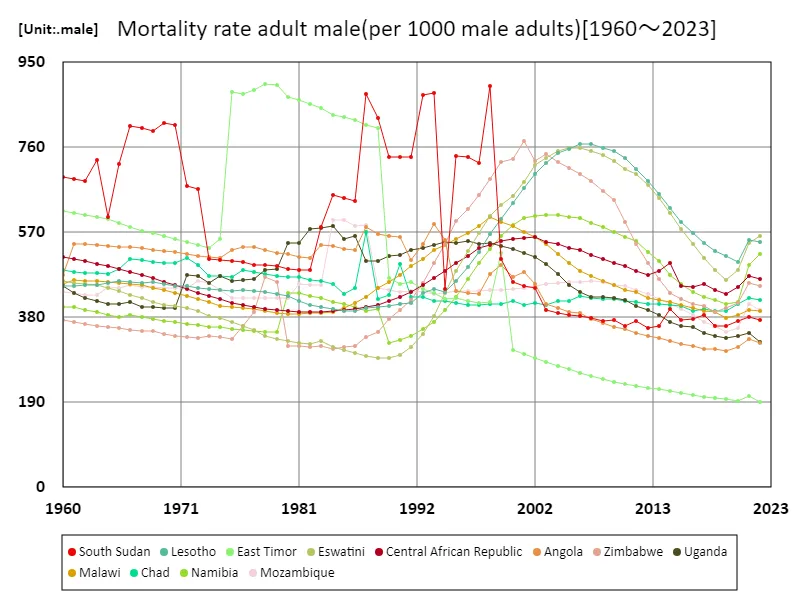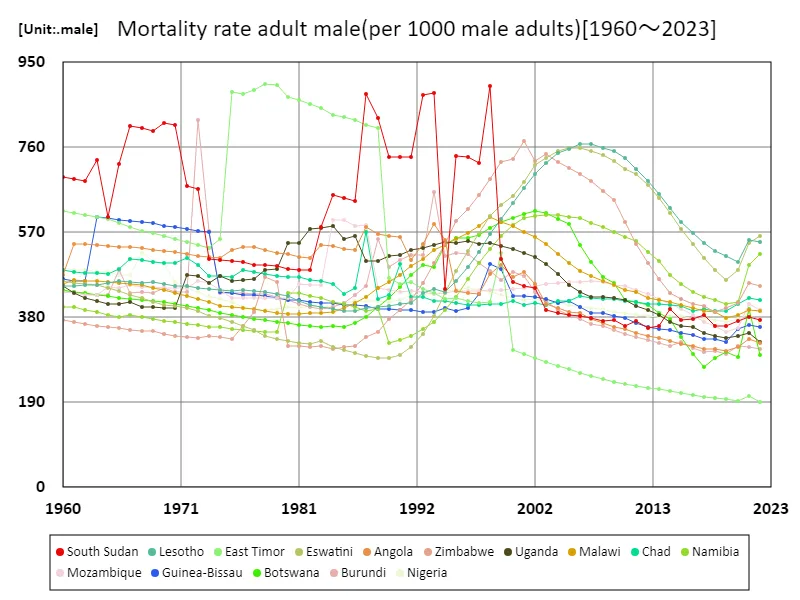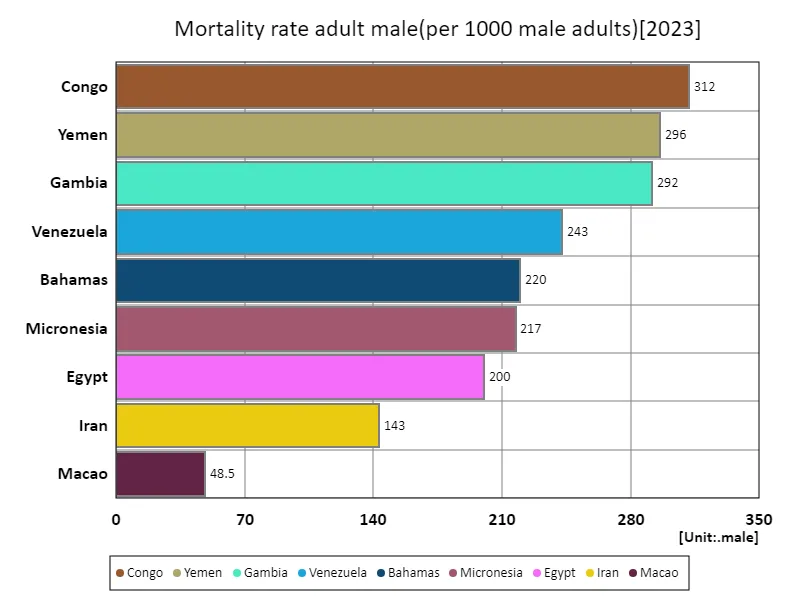Abstract
Eswatini’s high adult male death rate in 2022, at 561 per 1,000 men, reflects broader trends in countries facing severe health challenges. Historically, sub-Saharan Africa has seen elevated mortality rates due to factors like HIV/AIDS, malaria, and poor healthcare infrastructure. In Eswatini, high HIV prevalence, limited access to medical care, and socio-economic issues have contributed to the staggering mortality rate. Other regions with similar patterns have struggled with a combination of infectious diseases, violence, and inadequate health systems, influencing male life expectancy.
Deaths among adult males (per 1,000 males)
Timor-Leste’s peak adult male death rate of 901 per 1,000 men in 1978 reflects the devastating effects of conflict during the country’s struggle for independence. This high mortality was linked to war, violence, and poor healthcare. Since then, the death rate has drastically decreased, reaching 21.1% of its peak in recent years, as the nation has stabilized and improved its healthcare infrastructure. This trend mirrors broader global improvements in health and living conditions, with significant reductions in deaths due to violence, infectious diseases, and improved medical care in many regions.


The maximum is 901male[1978] of East Timor, and the current value is about 21.1%
Deaths among adult males (per 1,000 men) (worldwide)
Timor-Leste’s adult male death rate peaked at 901 per 1,000 men in 1978, reflecting the devastating impact of the country’s violent struggle for independence. The death toll was driven by war, malnutrition, and lack of healthcare. However, by 2022, the death rate had dropped to just 21.1% of its peak, illustrating the nation’s significant progress in stability and healthcare. This decline mirrors global trends of improving public health, reducing mortality from violence, infectious diseases, and improving medical services, particularly in post-conflict regions.


The maximum is 901male[1978] of East Timor, and the current value is about 21.1%
Deaths among adult males (per 1,000 men) (worldwide, latest year)
In 2023, Congo recorded the highest adult male death rate at 312 per 1,000 men, significantly above the global average of 203. This high rate is linked to ongoing conflicts, healthcare challenges, and infectious diseases such as malaria and HIV. While the global trend shows improvements due to better healthcare and disease control, Congo’s elevated mortality highlights the struggles in conflict-prone regions with limited access to medical care. Overall, the total number of deaths reached 2,030, emphasizing the need for continued investment in healthcare and conflict resolution in such regions.


The maximum is 312male of Congo, the average is 219male, and the total is 1.97kmale
Deaths among adult males (per 1,000 males) (region, latest year)
In 2022, the Central African Republic recorded an alarmingly high adult male death rate of 465 per 1,000 men, reflecting severe health and social challenges. Factors like civil war, political instability, and a lack of health services have exacerbated mortality. The global average was 254, with a total of 2,790 deaths, highlighting regional disparities. Countries with high mortality rates often face the impacts of conflict, weak health systems, and infectious diseases. Conversely, stable regions with better healthcare show lower rates. Continued investment in public health and support for high-mortality regions is essential to reduce these disparities.


The maximum is 172male of North America, the average is 172male, and the total is 172male



Comments